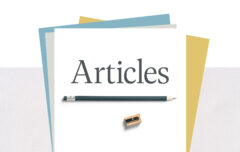If you’ve read this blog for a while, I guess you know that I’m a fan of The Lord of the Rings. I’m not one of those Tolkien fanboys who is going to react with offense when you get a fact wrong. Rather, I’m a fan of a good story and it’s beyond dispute, I think, that in The Lord of the Rings Tolkien has crafted an epic story. I mentioned recently that I’ve been reading the book with my family and that as I’ve been doing so, certain components of the story have been jumping out at me. Today I want to point to one more of these.
One thing that sets The Lord of the Rings apart from just about every other fantasy series I’ve ever tried reading is that it does not confuse good with evil. It never glamorizes evil. Tolkien carefully separates the good from the evil and avoids blurring distinctions between the two. It is always fascinating to keep an eye on Tolkien’s portrayal of these the two opposing forces.
One aspect of this that has stood out to me recently is the inability of evil to understand good and, conversely, good’s ability to understand evil. Here Tolkien has tapped into a crucial reality about good and evil.
As I’m sure you know, the whole book is based on a long and dangerous quest to destroy the Ring of Power. Many years before the commencement of the story, Sauron had created a ring and into this ring he had invested much of his strength and will. This ring was his greatest strength and potentially his greatest weakness. With it he was nearly unapproachable in his power; without it he was weakened; if it were to be destroyed, he too would be destroyed. Through a series of unlikely events the ring has ended up in the hands of Frodo Baggins, a hobbit, who has now been given the task of venturing to Mount Doom to destroy this ring. All the forces of evil are arrayed against him as he does this. And yet, somehow, he succeeds (sorry to give away the ending, but I’m sure you already know all of this). How then does Frodo succeed in so unlikely a quest?
He succeeds because Sauron, powerful though he may be, never understands what Frodo plans to do. Sauron sees good through the lens of evil. He cannot conceive of anyone actually destroying something as powerful as his ring. He assumes that everyone would do what he would do–use the ring to rule over others. Had he understood good, he would have known that the forces of good would destroy the ring and, in so doing, destroy him. He could simply then have surrounded Mount Doom with his armies and intercepted anyone who approached. But instead he projected his evil thoughts onto the forces of good and determined that they must be doing what he would do–using the ring as a means of power. And thus his actions, his attempts to find and retrieve the ring, were all wrong. In his evil he completely misunderstood good. And really, this is the way it had to be. How can evil understand good?
Here Tolkien has displayed in fictional form an important reality. Evil cannot understand good. When I communicate with an unbeliever, as I’ve been doing in my letters to Luke (another of which is coming soon) I can have confidence that I understand him better than he understands me. Why? Because I have been brought from darkness into light, from evil into good. I’ve known evil and now know good. Through the Bible I am given God’s eyes to see evil as he sees it and to understand it as he understands it. This gives me a whole new clarity. But one who has never turned to Christ has known only evil. He can see what is good but can understand it only through that lens of evil. I know what it is to be lost in a way that he cannot know what it is to be saved. Tolkien got this one right.










